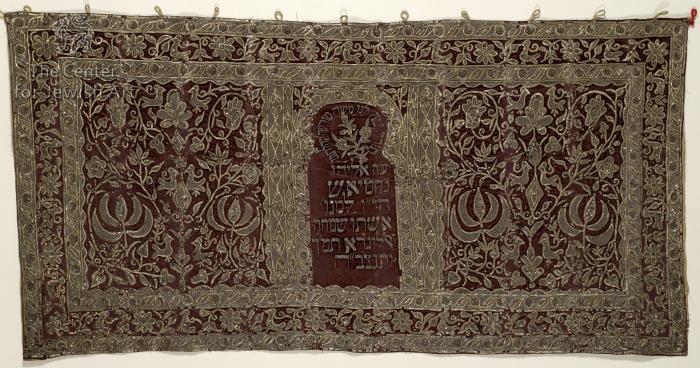Obj. ID: 39381 Torah case wrapper, Tunisia, circa 1900

sub-set tree:
H | Heraldic composition | Supporters | Two birds
F | Flower
B | Bird
A | Arch | Horseshoe arches
|
The following description was prepared by William Gross:
In the Ashkenazi and Sephardi tradition the Torah Scroll is protected when not being read by a textile covering, often very beautifully embroidered. In the Mizrachi and Romaniote traditions, the Sefer Torah is generally not robed in a mantle, but rather housed in an ornamental wooden case which protects the scroll, called a "tik".
The custom in both Tunisia and Libya was to wrap the multi-faceted wooden Tik in a fabric. This textile was sometimes elaborately embroidered, as in this example. The embroidery is exceptionally detailed, using gold metallic wrapped threads and sequins. This wrapper maintains its original beauty as one of the most elegant and richly decorated Torah Tik mantles. The textile was hung from pegs inserted around the top perimeter of the tik, using loops sewn to the top of the fabric. Inscription: Moses commanded us a law, an inheritance of the congregation of Jacob (Deuteronomy 33:4). [By] the servant of the Lord, Eliyahu Nachmias, May the Lord sustain him and grant him favor, for the eternal rest of his wife Simchah ?????? ??? and May her life be bound up in the bond of life










